Project details
Skill
Cost
Estimated Time
Weatherstripping, or attaching seals around an entry door to fill in the gaps, is essential to keep your home energy-efficient in the summer heat and winter cold. Even a tiny 1/8-inch gap around a typical entryway door is equal to having a 5 1/2-inch-diameter hole on an outside wall. Closing that gap to keep cold air out and air conditioning in can go a long way to lower your energy bills.
This Old House general contractor Tom Silva shows how to remove and replace the weatherstripping on an older front door.
Types of Weatherstripping Materials
A well-sealed door requires two components: weatherstripping the sides and top to fill in the space between the door and the jamb, and adding a sweep to the bottom to fill in the space between the door and the threshold. You can find several different types of weatherstripping on the market, each with its own advantages and disadvantages, and each meant for specific types of doors. Here are the most common:
- Foam and felt: Foam and felt are both inexpensive and easy to install, but they’re less durable, so you’ll need to replace them more often.
- Metal: Metal is harder to install, but it’s more durable and effective.
- Vinyl: Vinyl is another flexible material that resists moisture, suitable for various applications.
- Silicone: Silicone is the ideal weatherstripping material because it’s durable, soft, and stays tight as the door swells and shrinks.
Silva recommends using tubular silicone weatherstripping for the sides and top of the door, and a twin-fin silicone sweep for the bottom.
Preparing to Install Weatherstripping
Before installing your new weatherproofing, you’ll need to gather some tools and materials, remove the old weatherproofing, and prepare the door frame for the installation.
Tools and Materials Needed
Aside from the new weatherstripping kit and door sweep, you’ll need these tools:
- Drill/driver
- Flat pry bar
- Hammer
- Paint and primer (if needed)
- Router
- Sandpaper
- Screwdriver
- Stepladder
- Utility knife
Removing Old Weatherstripping
Break the paint seal by scoring along the edge of the molding and jamb with a utility knife. Then, with a flat pry bar or 5-in-one tool, carefully remove the old weatherstripping. Sand down any rough spots and remove any remaining nails with a claw hammer.
Different types and brands of weatherstripping come off differently. The door Silva works on in the video used metal weatherstripping, which comes off by pulling out the nails that attach it to the jamb.
Cleaning and Preparing the Door Frame
A clean, smooth door seal will help the new weatherstripping seal properly and stay watertight. Wipe off dust and debris on the door frame with a damp cloth. Check the door for any signs of damage, repair any minor damages with an epoxy wood filler, and sand everything as smoothly as necessary. You should also confirm the door is properly aligned with the frame, which gives the weatherstripping an even surface to stick to.
Installing the New Weatherstripping
Now, it’s time to prepare and install the new weatherstripping around the door.
Measuring and Cutting
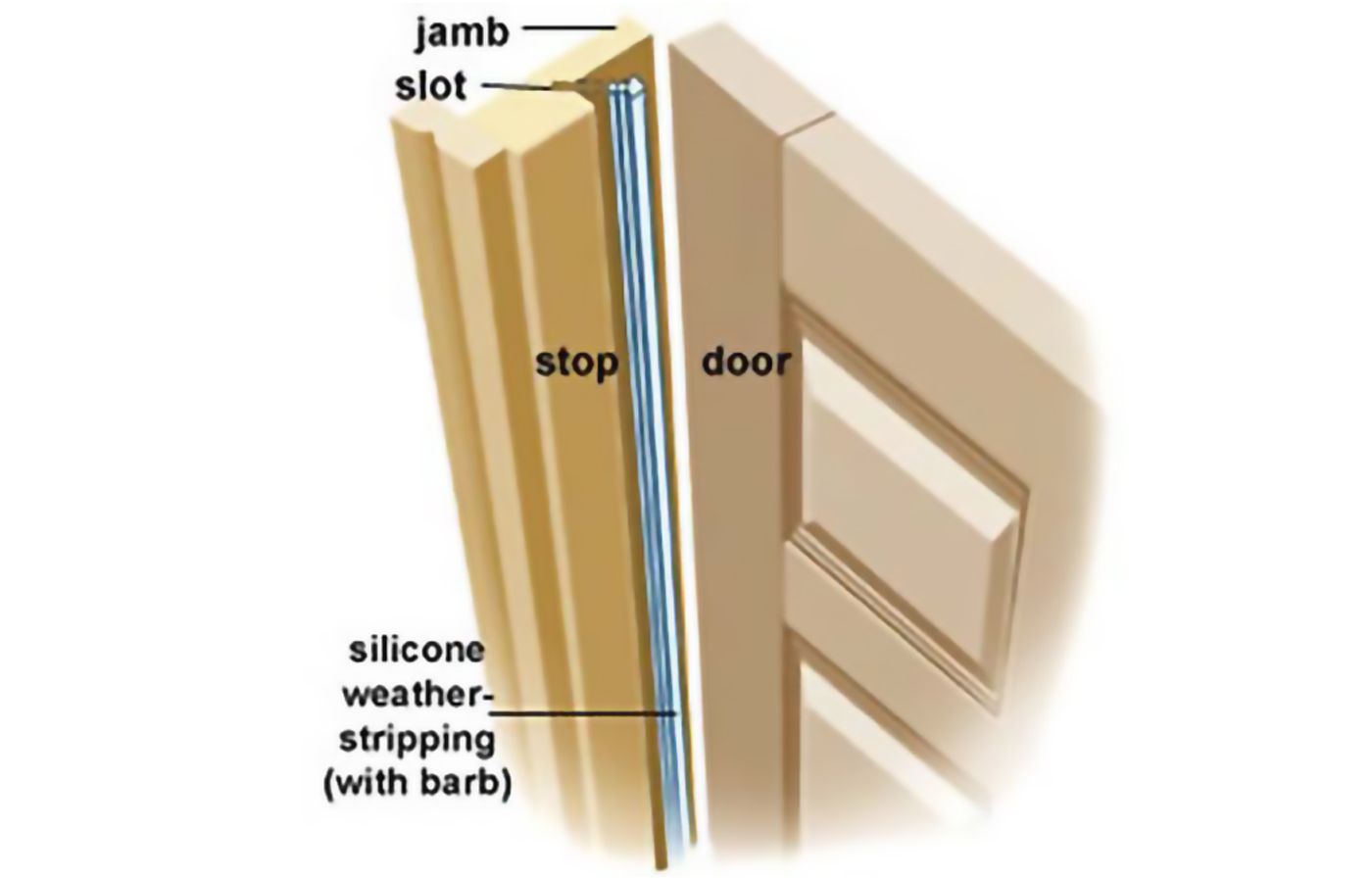
Accurate measurements and cuts ensure the weatherstripping fits properly and seals the gaps effectively.
Close the door and measure two different gaps: the gap between the door and the jamb, and the gap between the door and the stop. Measure along both side jambs and the head jamb, and note which ones are the largest. You’ll want to choose weatherstripping that’s large enough to fill those gaps.
Some weatherstripping comes precut, but if yours does not, cut it to size. If you’re using silicone weatherstripping, be careful not to stretch it—that would worsen its effectiveness.
Creating the Groove
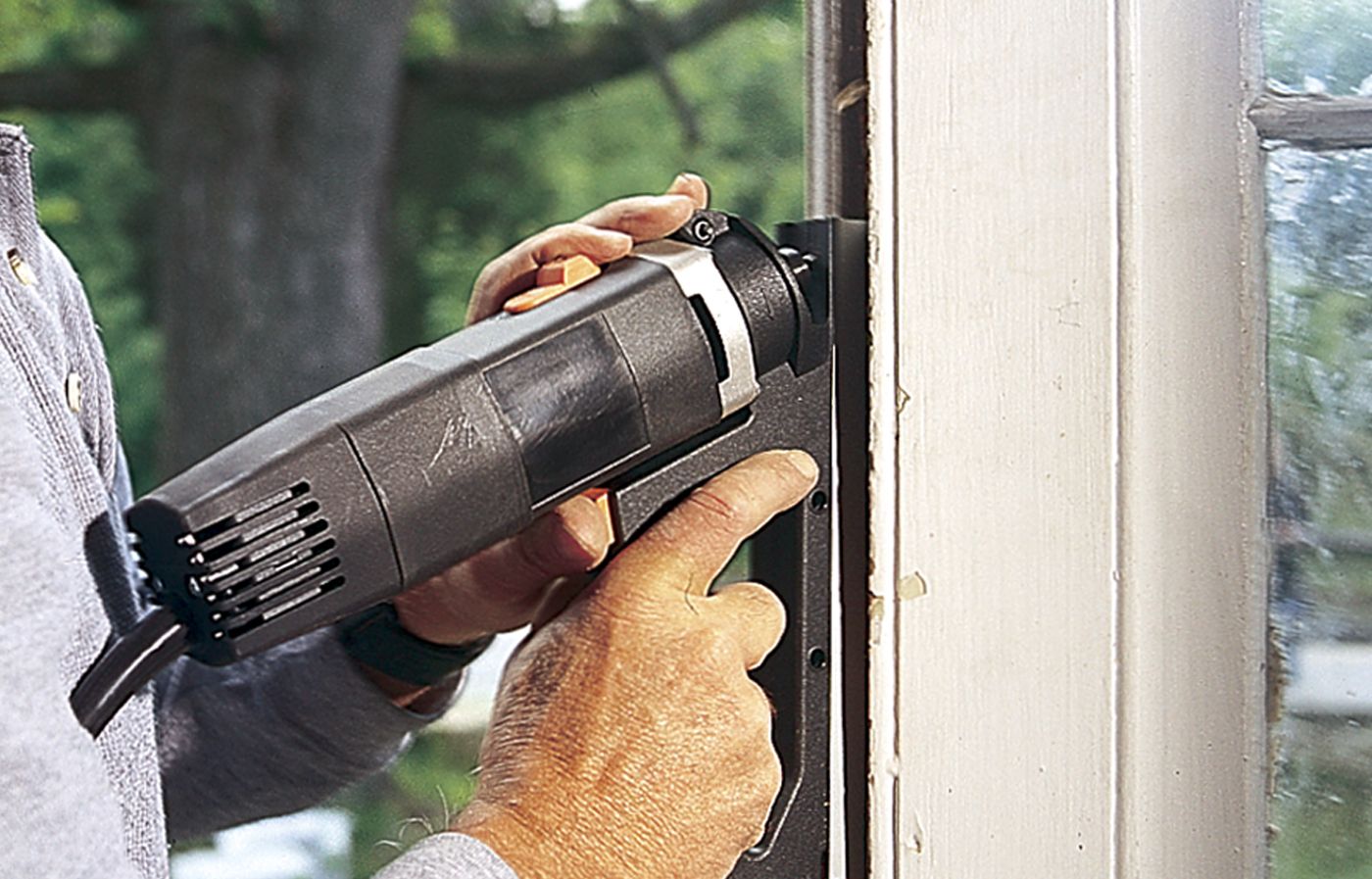
Making a groove for the weatherstripping can help it fit more snugly.
Tap out the hinge pins and remove the door from the opening. Pull a paint scraper along the stop and jamb to make sure both surfaces are smooth. Fit the grooving tool’s V-shaped base into the corner formed by the jamb and the stop, with the bit pointing up.
Turn on the motor and push the tool up to the head jamb. This creates a slot that’s 1/8 inch wide and 3/16 inch deep. At the top, turn off the motor and remove the bit from the slot. Reinsert it at the starting point, this time with the bit pointing down. (Retracing your path in the slot can widen it too much to grip the weatherstripping). A steady push to the bottom of the jamb with the motor revving finishes the slot on that side. Repeat the process on the opposite side jamb and the head jamb.
Inserting the Weatherstripping

Take one end of the weatherstripping and push its barbed tongue into one end of the slot. Be careful not to stretch the weatherstripping or it’ll return to its original length and leave gaps. A couple of inches from the slot’s opposite end, gauge the proper length and cut the strip with scissors. It’s not necessary to miter the ends where they meet at the head jamb—a butt joint seals best.
Drive the weatherstripping into its slot with a spline roller. Check the installation by shutting the door from the outside and looking for gaps.
Making the Dado
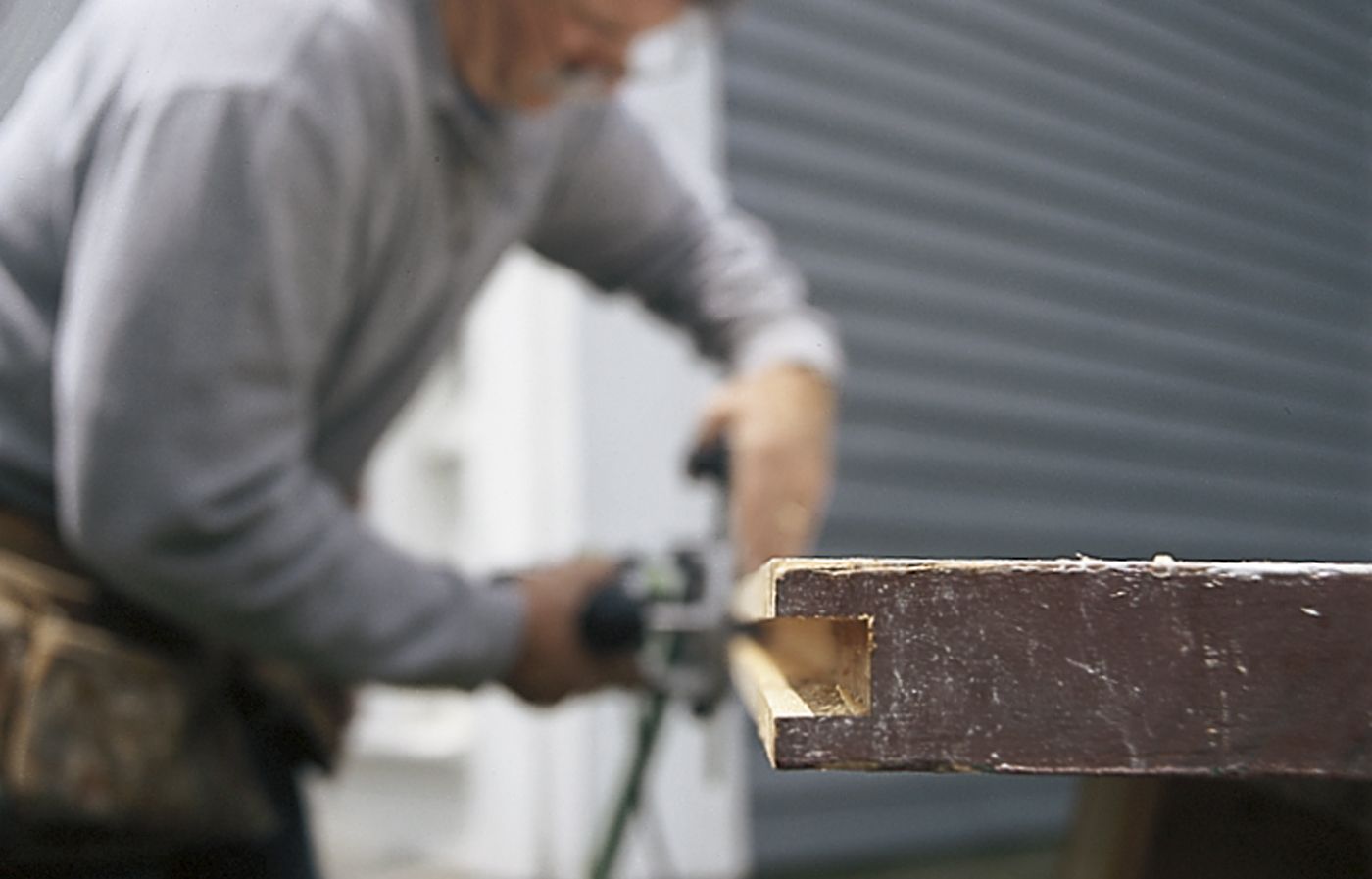
To seal the door bottom, place the door on sawhorses and use a square to mark out a 5/8-inch-wide dado (or trench) centered on the door’s bottom edge. Set the router’s guide so a 1/2-inch bit will cut next to the top mark when the guide rests on the door’s top face.
On the first pass, move the router from left to right. On the second pass, let the guide ride on the door’s opposite side, and move the router from right to left. Make multiple passes to reach a full depth of 1 1/8 inch.
Painting the Wood and Attaching the Channel
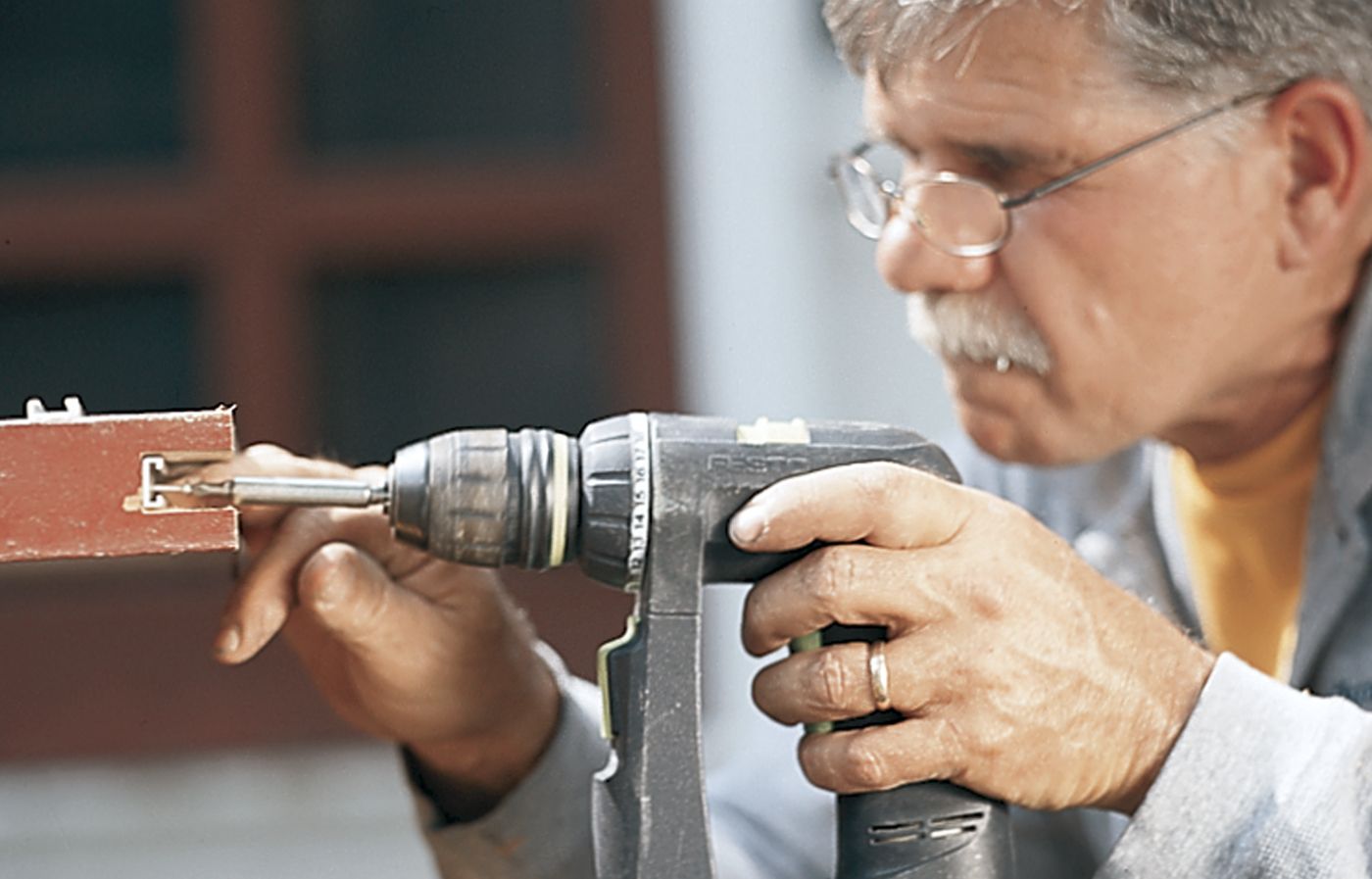
Coat the exposed wood in the dado with primer and paint.
Cut the sweep’s two aluminum channels 1/8-inch shy of the width of the door to allow for end caps to be installed later. To make sure the cut is clean, clamp the channels in a miter box and use a hacksaw with a waxed blade. Insert one channel into the dado, center it end to end, and screw it in place.
Attaching the Sweep
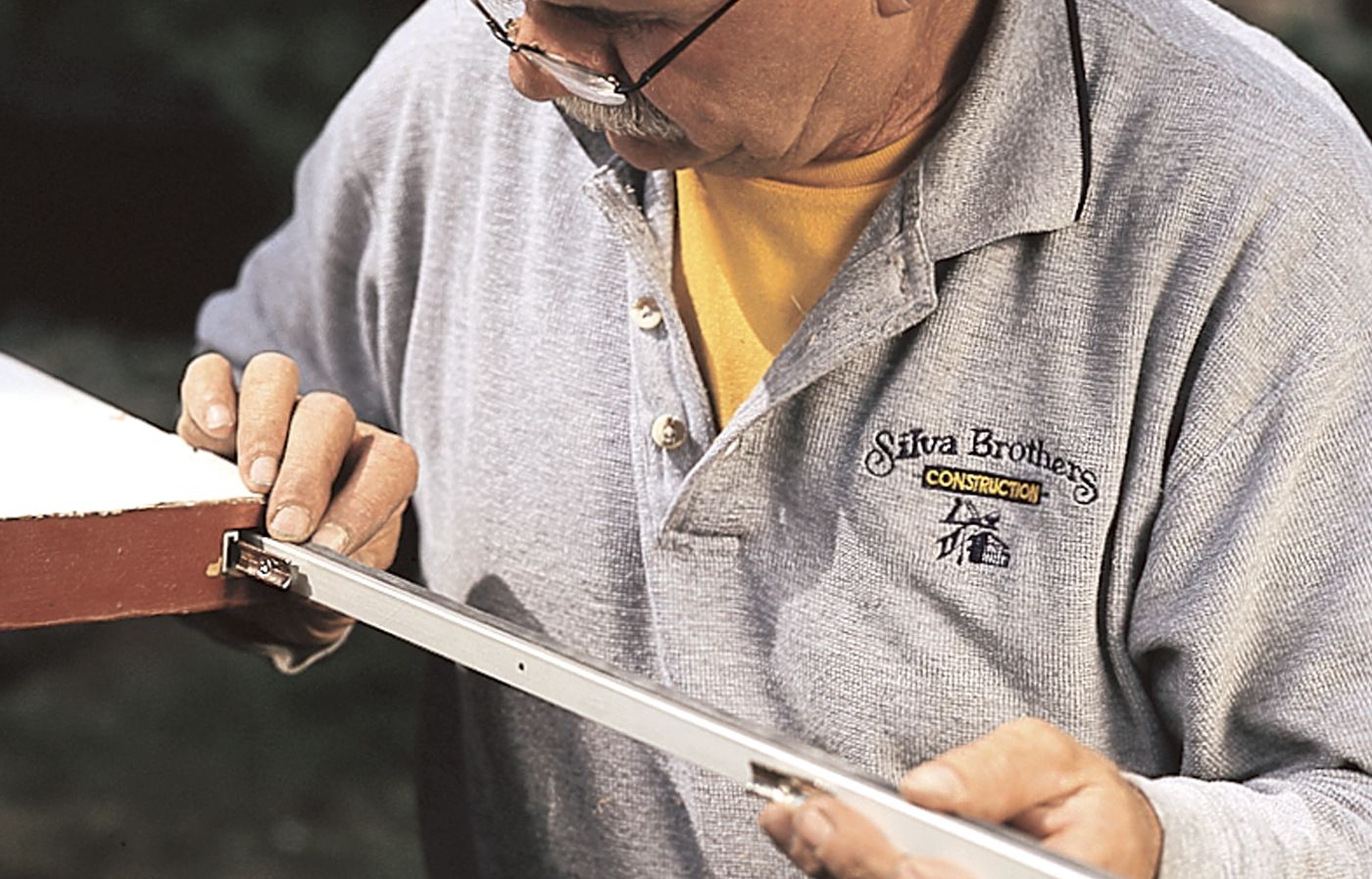
Fit the black silicone, sweep into the free channel, and slide the glides into the dado channel. Then, carefully rehang the door.
To seal the ends of the dado, snap plastic caps into the ends of the channel and stick squares of adhesive-backed pile against the bottom of the jambs.
Adjusting the Glides

After installation, fine-tune the weatherstripping by adjusting the glides. When the door is closed, no light should show between the sweep and the threshold.
To adjust the fit of the glides, open the door, remove the end cap from the latch side, and slide out the sweep. Turning the glides clockwise raises the sweep, counter-clockwise lowers it. Then slide the glides back into the attached channel.
Additional Tips for Long-lasting Weatherstripping
Once you’ve completed the installation process, you’ll need to periodically check your new weatherproofing for wear, especially during the changing seasons. As temperatures move to a new normal, the expansion and contraction of materials can form gaps.
Also, make sure that the door stays properly aligned and doesn’t sag as your house expands, contracts, and settles. A misaligned door can wear out the weatherstripping faster.
